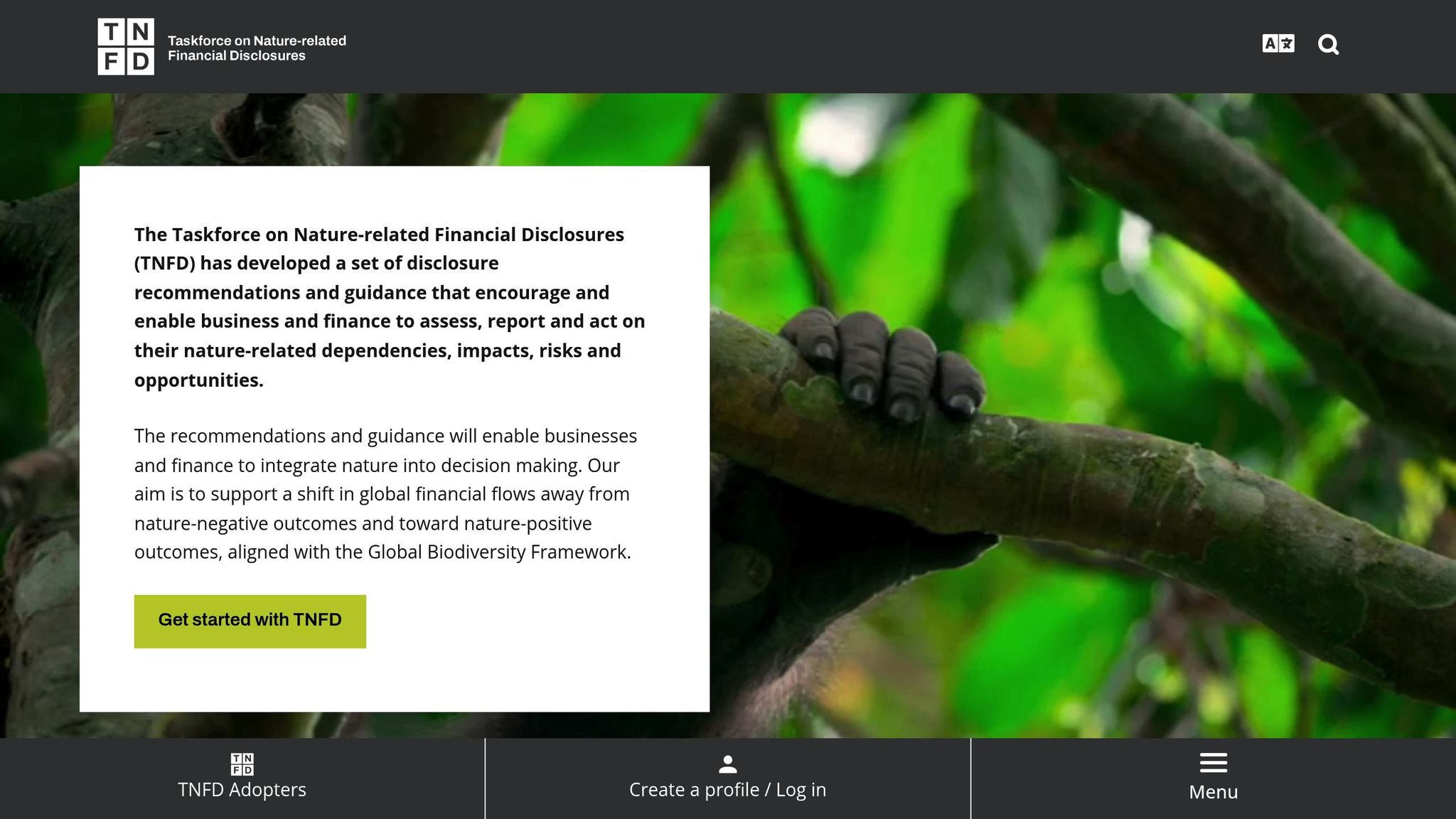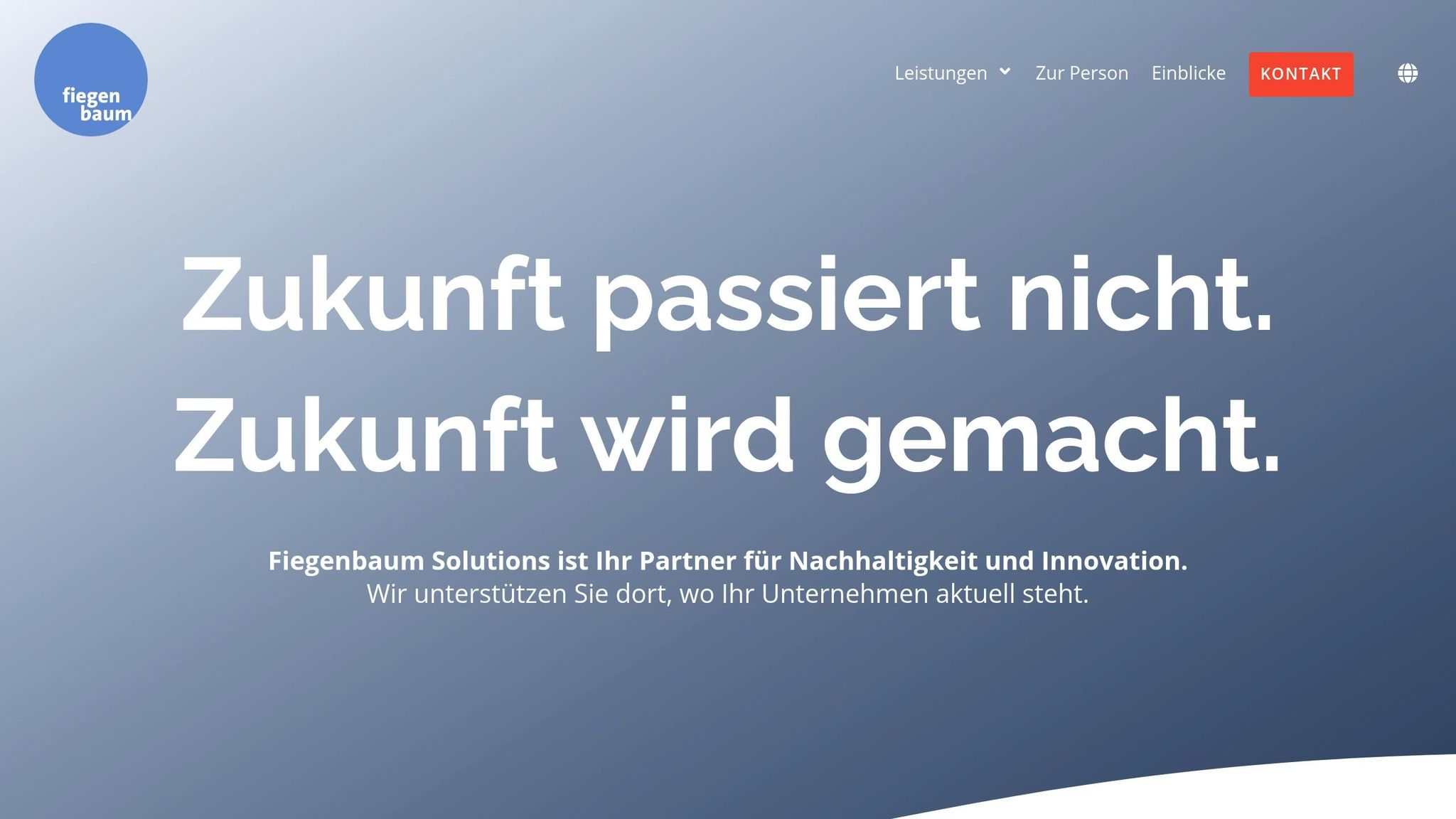Understanding and Implementing the TNFD Framework: Managing Nature-Related Risks for Business Success
The Taskforce on Nature-related Financial Disclosures (TNFD) offers companies a voluntary framework...
By: Johannes Fiegenbaum on 9/19/25 8:49 PM

The TNFD framework provides companies with a clear roadmap to understand and transparently report on nature-related risks and opportunities. Given the EU requirements for sustainability reporting (CSRD), it's becoming increasingly important for German companies to integrate biodiversity aspects into their strategies and reports. With the LEAP approach (Locate, Evaluate, Assess, Prepare), companies can systematically analyze their dependencies on natural resources and develop targeted measures. Industries such as agriculture, chemicals, or mining particularly benefit from early implementation to minimize risks and secure competitive advantages.
Implementing the TNFD framework is not just an obligation, but an opportunity to act more resiliently and transparently in the long term. You can start immediately to prepare for future regulations and convince your stakeholders.

The TNFD framework is based on four central pillars that provide companies with a structured approach for reporting on biodiversity topics.
The LEAP approach is the methodological core of the TNFD framework and provides companies with clear guidance to systematically assess nature-related topics.
The disclosure requirements of the TNFD framework are flexibly designed and applicable to companies of all sizes. Specific points are defined for each of the four pillars – from qualitative information on governance processes to quantitative biodiversity metrics.
Sector-specific guidelines are particularly important for German companies. Financial institutions, for example, should analyze their lending and investment practices regarding nature-related risks. Manufacturing companies, on the other hand, must disclose the direct impacts of their operations on ecosystems.
Another focus is on the entire value chain: companies assess not only their own activities but also the impacts of their suppliers and customers. Using a materiality analysis, they can identify the most important nature-related topics for their business model and stakeholders.
In the next section, you'll learn how to implement the TNFD framework in practice.
Getting started with TNFD implementation begins with an honest assessment of your business activities' impacts on biodiversity. You should examine both your direct operating locations and the entire supply chain.
Start with an inventory of all business activities and their geographical distribution. This includes production facilities, offices, warehouses, and key suppliers along the value chain. Locations near protected areas, water bodies, or other ecologically sensitive areas are particularly critical.
Engaging relevant stakeholders is crucial at this stage. Conversations with local communities, environmental organizations, or scientific institutions can help you gain a complete picture of impacts. Some companies are already successfully working with partners like NABU to better understand their ecological footprint.
Also analyze which ecosystem services are crucial for your business processes. Do you need clean water for production, or do your agricultural suppliers depend on natural pollination? These insights form the foundation for using the LEAP approach to further specify risks and opportunities.
After the initial assessment, it's time to apply the LEAP method to deepen your analysis. The method comprises four steps:
To make your progress measurable, you need meaningful indicators. Start with basic metrics like land use, water consumption, or emissions in ecologically sensitive areas – these are relatively easy to capture.
For more detailed insights, you can develop more specific KPIs, such as the number of protected species on your operating sites, the quality of surrounding water bodies, or the proportion of near-natural areas in the supply chain. Ensure these metrics are compatible with regulatory requirements like the EU Taxonomy Regulation.
Digital monitoring tools – such as sensors, satellite data, or apps – can help improve data quality and minimize reporting effort. The established KPIs ultimately form the foundation for your ESG reporting.
Once your biodiversity data is available, integrate it into your ESG processes. You'll need to adapt your reporting structures and expand the materiality analysis to include biodiversity-related topics. Feedback from investors, customers, and other stakeholders should also be considered.
Organize your data along the four TNFD pillars to facilitate both internal analysis and external communication. Training for your reporting team is essential, as biodiversity often requires different data sources and analyses than traditional ESG metrics. Integrated reporting that links biodiversity with topics like climate change and social aspects meets your stakeholders' expectations.
Biodiversity data is often incomplete or inconsistent. Start with available sources, such as public databases from the Federal Agency for Nature Conservation, and work to gradually improve data quality.
To fill data gaps, you can use estimation methods, proxy indicators, or model-based approaches. It's important to transparently document these methods and continuously develop them.
Partnerships with research institutions can also help improve the data foundation in the long term and refine your analyses. Such collaborations provide you with access not only to better data but also to valuable expertise.
TNFD provides a range of official documents and digital tools that can ease your entry. The free TNFD framework forms the foundation and is supplemented by sector-specific guidelines tailored to sectors like agriculture, financial services, or mining.
Additionally, there are digital toolkits that support the implementation process. These include templates for LEAP analysis, checklists for data collection, and examples of relevant metrics. TNFD's interactive platforms also provide regularly updated content to help with implementation.
A notable step: The German government invested around 29 million euros over six years in December 2022 in TNFD development and capacity building. These funds flow into German-language resources and training programs, among other things. Over 500 organizations have already voluntarily committed to reporting according to TNFD recommendations. They share their experiences through the TNFD community platform, creating valuable exchange. Additionally, data platforms facilitate practical implementation by seamlessly integrating various data sources.
Initiatives like the Nature Data Public Facility improve access to relevant nature data – a crucial advantage for German companies. Reporting platforms continue to evolve and increasingly integrate TNFD requirements alongside established standards like CSRD and GRI. Such interoperability tools reduce effort by bringing together data from different sources and automatically checking for consistency.
These tools are a solid foundation, but in many cases, additional support from specialized consulting services proves valuable.
When digital tools and data platforms reach their limits, professional consulting brings the decisive advantage. Fiegenbaum Solutions offers services specifically tailored to German companies for TNFD implementation. This includes complete LEAP analyses, development of sector-specific KPIs, and integration of results into existing ESG strategies.
A common problem is data gaps. Here, Fiegenbaum Solutions helps by identifying missing data, developing suitable proxy indicators, and establishing robust estimation methods – always considering German regulatory requirements and international standards.
Furthermore, there's a focus on strategic anchoring of biodiversity. Instead of viewing TNFD purely as a reporting obligation, biodiversity is positioned as an opportunity and instrument for better risk management. Given that 55% of global GDP (58 trillion US dollars) is materially dependent on nature, this is a central aspect.
The consulting also includes scenario analyses and stress tests to assess possible future developments in biodiversity. According to the Global Risks Report 2024 from the World Economic Forum, biodiversity loss and ecosystem collapse are among the three biggest global risks of the coming decades.
Another important point: According to PwC's Global Investor Survey 2023, 75% of respondents want to know how companies impact society and the environment. Fiegenbaum Solutions supports companies in communicating their biodiversity performance in a way that meets the expectations of investors, customers, and other stakeholders.
Linking TNFD with your ESG and climate strategies significantly strengthens your sustainability efforts. Climate change and biodiversity loss are closely intertwined and therefore require coordinated approaches. The proven structure of the TNFD framework fits perfectly with standards like TCFD and ISSB, making integration into existing reporting processes easier.
An early start with TNFD can provide German companies with clear competitive advantages. Germany actively supports the development and introduction of the TNFD framework, including through financial support and establishing a national TNFD platform. Advances in technologies like remote monitoring, sensors, eDNA, citizen science, drones, and AI make it possible to assess biodiversity cost-effectively – a plus, especially for SMEs. If you understand your dependencies on natural resources early, you can manage risks more strategically. At the same time, you create the foundation to respond flexibly and proactively to new regulations.
Extended requirements are already being discussed at the EU level. The European Commission is planning specific disclosure obligations for biodiversity that are oriented toward the TNFD framework. Companies that introduce TNFD-compliant processes early are better prepared for these upcoming regulatory developments and can secure a strategic advantage.
Incorporating the TNFD framework is not an optional decision for German companies, but a strategic step to remain future-ready. Biodiversity risks have direct impacts on your financial results and can significantly influence your business operations. With its four pillars, the TNFD framework offers a clear approach to better understand and manage nature-related risks.
A major advantage lies in easy integration into existing ESG reporting and climate strategies. Companies that act now secure an advantage with future EU requirements for biodiversity reporting and can simultaneously achieve operational efficiency gains. Below, we show you how to gradually integrate TNFD into your processes.
Immediate actions:
Medium-term steps:
Long-term integration:

If you want support with implementation, Fiegenbaum Solutions is your reliable partner. The team offers tailored consulting approaches ranging from initial biodiversity assessment to integration into your ESG strategy.
Johannes Fiegenbaum combines practical knowledge and regulatory expertise to help you achieve tangible progress in TNFD implementation. Particularly helpful is the linking of biodiversity strategies with climate risk management and CSRD compliance – an approach that creates synergies and reduces reporting effort.
Thanks to flexible collaboration models, you can implement both specific projects and enter into long-term partnerships. For a free initial consultation and individual solution proposals, the Fiegenbaum Solutions team is always available.
With these steps, you can seamlessly integrate TNFD into your ESG strategy and make an important contribution to your sustainable business success.
Integrating the TNFD framework into your ESG strategy begins with the LEAP process (Locate, Evaluate, Assess, Prepare). This approach enables systematic analysis of your company's dependencies on nature and the impacts of your business activities on it. You should definitely consider existing EU regulations like the CSRD. This way, you can leverage synergies while ensuring you meet all regulatory requirements.
For implementation, it's crucial to create clear governance structures. Nature-related risks and opportunities should be firmly integrated into your strategies, supplemented by measurable goals and metrics. Those who act early benefit in multiple ways: improved risk assessment, easier access to sustainable capital, and stronger credibility with investors are just some of the advantages. A structured approach also offers the opportunity to secure long-term competitive advantages and strengthen your company's sustainable orientation.
Early adoption of the TNFD framework offers German companies the opportunity to strategically prepare for upcoming EU requirements. This allows nature-related risks to be identified early and actively managed, helping to proactively meet regulatory requirements.
Furthermore, this strengthens competitiveness and provides more clarity in reporting. Companies that integrate biodiversity into their ESG strategy early can not only tap into new market potential but also present themselves as pioneers of sustainable corporate governance.
Companies often encounter obstacles when applying the TNFD framework, such as limited data availability, varying data quality, and difficult access to reliable nature data. These problems often arise from the lack of uniform standards and a fragmented data landscape.
A solution is to establish common data standards, promote collaborations for data exchange, and use modern technologies like artificial intelligence or automated analyses. Such approaches can not only improve data quality but also facilitate access to relevant information.
By implementing these measures, companies can better meet the requirements of the TNFD framework and more effectively manage nature-related risks and opportunities.

ESG & sustainability consultant specializing in CSRD, VSME, and climate risk analysis. 300+ projects for companies like Commerzbank, UBS, and Allianz.
More aboutThe Taskforce on Nature-related Financial Disclosures (TNFD) offers companies a voluntary framework...
Banks are demanding increasingly detailed biodiversity reports from companies. Why? Biodiversity...
Executive...